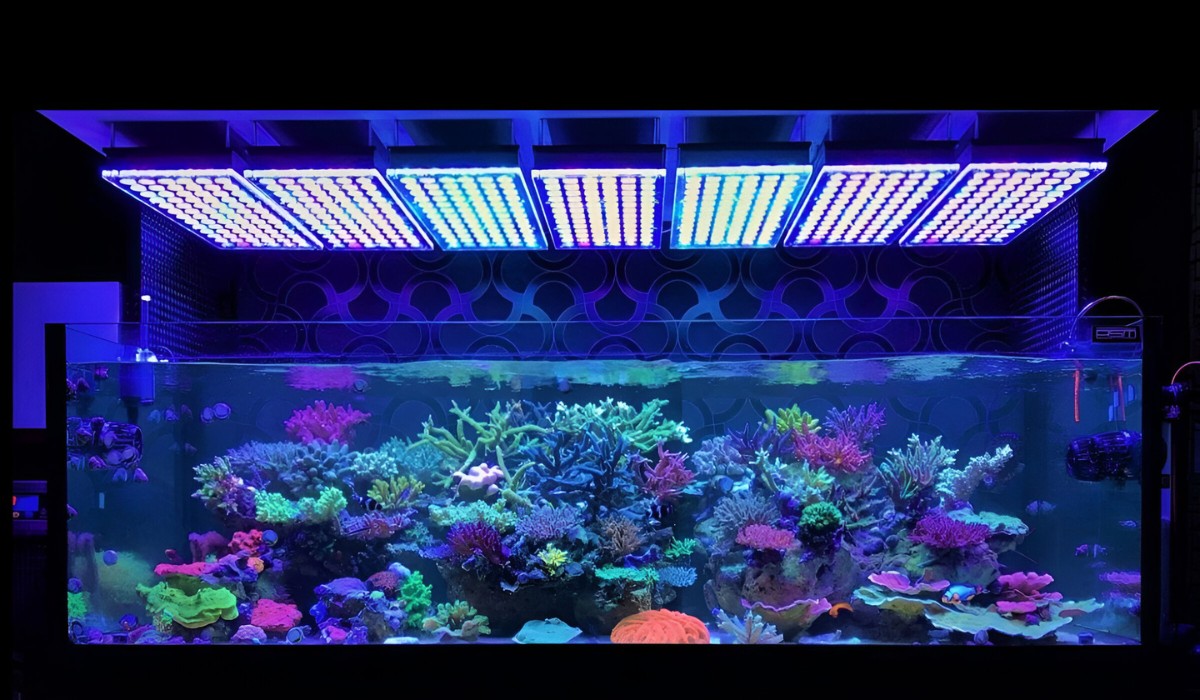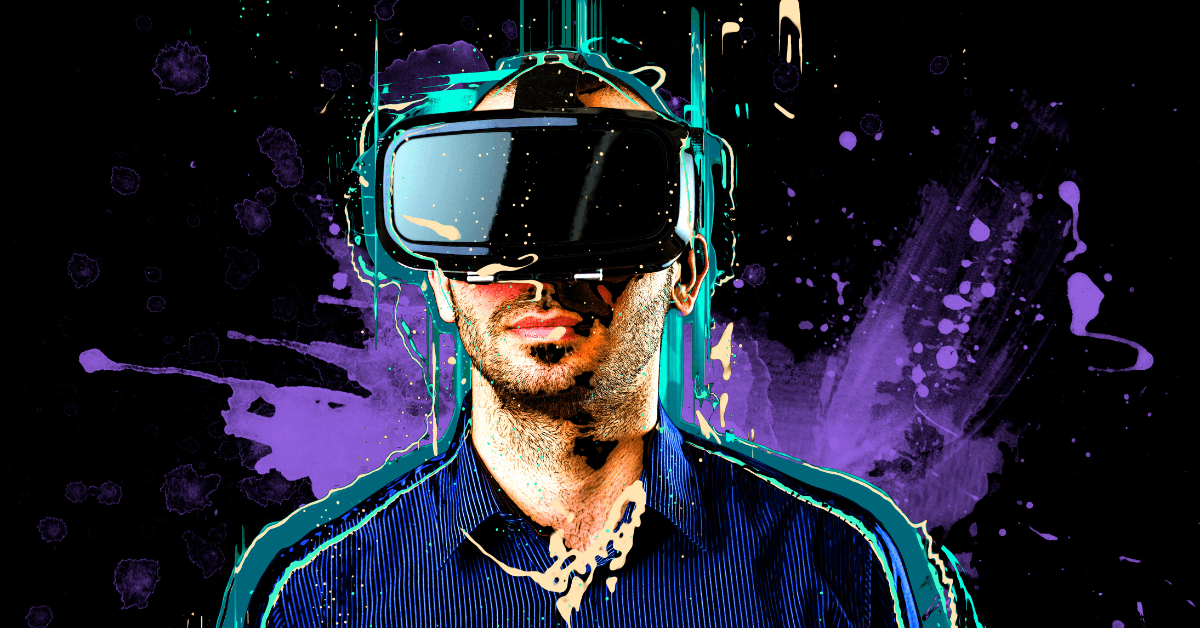Introduction
Aquariums are captivating ecosystems that allow us to observe the beauty and wonder of aquatic life up close. One crucial aspect of maintaining a healthy and vibrant aquarium environment is the lighting system. Proper lighting not only enhances the visual appeal of the tank but also plays a pivotal role in supporting the well-being of its inhabitants.
In the realm of aquarium lighting, the utilization of blue light has garnered significant attention due to its unique impact on fish behavior and overall aquarium health. As we delve into the realm of aquarium lighting, it becomes evident that the thoughtful application of blue light can yield a multitude of benefits for both the aquatic life and the enthusiasts who cherish their underwater companions.
In this comprehensive exploration, we will uncover the significance of lighting in aquariums and delve into the specific characteristics of blue light. By understanding the impact of blue light on fish behavior and health, we can gain valuable insights into the benefits it offers. Additionally, we will highlight best practices for integrating blue light into fish tanks, providing enthusiasts with actionable guidance for optimizing their aquatic environments.
Through this journey, we aim to shed light on the captivating world of aquarium lighting, particularly focusing on the intriguing realm of blue light and its profound influence within the aquatic realm. Let's embark on this illuminating exploration to unravel the compelling role of blue light in shaping the enchanting underwater landscapes of aquariums.
The Importance of Lighting in Aquariums
The significance of lighting in aquariums extends far beyond mere illumination. It serves as a fundamental element that influences the overall health, behavior, and aesthetics of the aquatic environment. Adequate lighting is essential for supporting the photosynthetic processes of live plants, which contribute to the oxygenation and overall ecological balance of the aquarium. Furthermore, the right lighting conditions are crucial for the well-being of the fish and other inhabitants, as it directly impacts their biological rhythms, growth, and coloration.
Proper lighting also plays a pivotal role in creating a visually captivating display within the aquarium. It accentuates the vibrant colors of the aquatic flora and fauna, enhancing the aesthetic appeal and providing enthusiasts with a mesmerizing underwater spectacle. Additionally, well-designed lighting can simulate natural sunlight, thereby replicating the natural habitat of the aquatic species and fostering a more natural and comfortable environment for them.
Moreover, lighting influences the behavioral patterns of fish and other aquatic organisms. It regulates their activity levels, feeding behavior, and reproduction cycles. By mimicking the natural light cycle, aquarium lighting can help maintain the biological rhythms of the inhabitants, promoting their overall well-being and reducing stress levels.
In essence, the importance of lighting in aquariums transcends mere visual enhancement. It is an indispensable component that directly impacts the ecological balance, biological processes, and overall vitality of the aquatic ecosystem. Therefore, understanding and optimizing the lighting conditions within an aquarium is crucial for creating a thriving and visually captivating underwater world.
By recognizing the multifaceted role of lighting in aquariums, enthusiasts can make informed decisions regarding the selection and management of lighting systems, thereby nurturing a vibrant and harmonious aquatic habitat that supports the well-being of its inhabitants.
Understanding Blue Light in Fish Tanks
Blue light, a crucial component of the visible light spectrum, holds a distinct position in the realm of aquarium lighting. Within fish tanks, blue light is characterized by its shorter wavelength and higher energy, imparting a unique visual ambiance and exerting specific physiological effects on aquatic life.
In the context of aquariums, blue light is renowned for its ability to penetrate water deeply, creating a captivating underwater environment that accentuates the vibrant colors of corals, fish, and other aquatic inhabitants. This penetration depth is attributed to the shorter wavelength of blue light, allowing it to travel further through water compared to light of longer wavelengths. As a result, blue light plays a pivotal role in illuminating the subtle nuances and vivid hues of the aquatic ecosystem, enriching the visual experience for aquarium enthusiasts.
Beyond its aesthetic allure, blue light also influences the behavior and physiology of fish and other aquatic organisms. It has been observed that blue light can stimulate natural behaviors in certain species, such as promoting feeding responses and enhancing the visibility of prey items. Additionally, blue light is known to contribute to the regulation of biological rhythms in fish, aiding in the synchronization of their internal clocks with the natural light cycle, thereby promoting overall well-being and reducing stress levels.
Furthermore, blue light is integral to the photosynthetic processes of photosynthetic organisms within the aquarium, such as corals and certain types of algae. It facilitates the absorption of light energy necessary for photosynthesis, supporting the growth and vitality of these organisms. Additionally, blue light is essential for the development of pigments in corals, contributing to their striking and diverse coloration.
Understanding the unique characteristics and effects of blue light in fish tanks provides enthusiasts with valuable insights into its multifaceted role within the aquatic environment. By harnessing the benefits of blue light, aquarium enthusiasts can create visually stunning displays while promoting the well-being and natural behaviors of their aquatic companions.
In the subsequent sections, we will delve deeper into the impact of blue light on fish behavior and health, as well as explore the multitude of benefits it offers within the realm of aquariums. Through this exploration, we aim to illuminate the captivating interplay between blue light and the enchanting underwater landscapes of fish tanks, offering enthusiasts a deeper understanding of its profound influence within the aquatic realm.
The Impact of Blue Light on Fish Behavior and Health
The influence of blue light on fish behavior and health extends beyond its aesthetic appeal, delving into the physiological and behavioral dynamics of aquatic life. Blue light plays a pivotal role in regulating the biological rhythms of fish, thereby impacting their behavior, overall well-being, and physiological processes.
One notable effect of blue light on fish behavior is its ability to stimulate natural activities such as feeding and exploration. Studies have shown that certain fish species exhibit heightened feeding responses and increased activity levels under blue light, indicating its potential to evoke natural behaviors. This stimulation of natural behaviors is essential for maintaining the overall health and vitality of fish within the aquarium, as it promotes their physical activity and engagement with their environment.
Moreover, blue light contributes to the regulation of fish's biological rhythms, aiding in the synchronization of their internal clocks with the natural light cycle. This synchronization is crucial for maintaining the natural behavioral patterns and physiological processes of fish, including their sleep-wake cycles, feeding routines, and reproductive activities. By aligning with the natural light cycle, fish are less likely to experience disruptions in their biological rhythms, leading to reduced stress levels and overall improved health.
In addition to its impact on behavior, blue light influences the physiological well-being of fish. It has been observed that exposure to adequate levels of blue light can contribute to the overall health and coloration of fish. Blue light plays a role in enhancing the visibility of fish, accentuating their natural colors and patterns, thereby enriching the visual experience for aquarium enthusiasts. Furthermore, blue light has been linked to the production of certain pigments in fish, contributing to their vibrant coloration and overall aesthetic appeal.
Furthermore, the influence of blue light extends to the photosynthetic organisms within the aquarium, such as corals and certain types of algae. These organisms rely on blue light for photosynthesis, which is essential for their growth and vitality. By providing the necessary light energy for photosynthesis, blue light indirectly supports the ecological balance of the aquarium, contributing to the overall health and sustainability of the aquatic ecosystem.
In essence, the impact of blue light on fish behavior and health is multifaceted, encompassing its role in stimulating natural behaviors, regulating biological rhythms, enhancing fish coloration, and supporting the photosynthetic processes of aquatic organisms. By understanding and leveraging the influence of blue light, aquarium enthusiasts can create an environment that promotes the well-being and natural behaviors of their aquatic companions, fostering a thriving and visually captivating underwater world.
Benefits of Using Blue Light in Aquariums
The utilization of blue light in aquariums offers a myriad of benefits that extend beyond its visual allure, encompassing the physiological well-being and ecological balance of the aquatic environment. By harnessing the unique properties of blue light, aquarium enthusiasts can create an enchanting underwater world that not only captivates the senses but also supports the health and natural behaviors of its inhabitants.
One of the prominent benefits of using blue light in aquariums is its ability to accentuate the vibrant colors of corals, fish, and other aquatic organisms. Blue light, with its shorter wavelength and higher energy, penetrates water deeply, illuminating the subtle nuances and vivid hues of the aquatic ecosystem. This accentuation of natural colors contributes to the visual splendor of the aquarium, providing enthusiasts with a mesmerizing display of aquatic life.
Moreover, blue light plays a pivotal role in promoting the natural behaviors of fish and other aquatic organisms. Certain fish species exhibit heightened feeding responses and increased activity levels under blue light, indicating its potential to evoke natural behaviors. By stimulating these natural activities, blue light fosters the physical and mental engagement of the inhabitants, contributing to their overall well-being and vitality within the aquarium.
In addition to its impact on fish behavior, blue light contributes to the regulation of biological rhythms, aiding in the synchronization of internal clocks with the natural light cycle. This synchronization is crucial for maintaining the natural behavioral patterns and physiological processes of fish, leading to reduced stress levels and improved health. Furthermore, the exposure to adequate levels of blue light has been linked to the enhancement of fish coloration, accentuating their natural beauty and enriching the visual experience for aquarium enthusiasts.
Furthermore, blue light is integral to the photosynthetic processes of photosynthetic organisms within the aquarium, such as corals and certain types of algae. It facilitates the absorption of light energy necessary for photosynthesis, supporting the growth and vitality of these organisms. By providing the necessary light energy for photosynthesis, blue light indirectly supports the ecological balance of the aquarium, contributing to the overall health and sustainability of the aquatic ecosystem.
In essence, the benefits of using blue light in aquariums encompass its role in accentuating natural colors, stimulating natural behaviors, regulating biological rhythms, enhancing fish coloration, and supporting the photosynthetic processes of aquatic organisms. By leveraging the multifaceted benefits of blue light, aquarium enthusiasts can cultivate a thriving and visually captivating underwater world that promotes the well-being and natural behaviors of their aquatic companions.
Best Practices for Using Blue Light in Fish Tanks
When integrating blue light into fish tanks, adhering to best practices is essential to ensure the optimal well-being of the aquatic inhabitants and the overall ecological balance of the aquarium. By following these best practices, aquarium enthusiasts can harness the benefits of blue light while creating a visually captivating and thriving underwater environment.
-
Balanced Lighting Schedule: Establishing a balanced lighting schedule is crucial for maintaining the natural light cycle within the aquarium. Incorporate periods of blue light illumination to mimic the natural daylight cycle, allowing fish and photosynthetic organisms to align with their biological rhythms. Avoid prolonged exposure to blue light at night, as it can disrupt the resting patterns of the fish.
-
Adjustable Intensity: Opt for blue light fixtures with adjustable intensity settings, enabling precise control over the level of illumination. This flexibility allows enthusiasts to tailor the intensity of blue light based on the specific requirements of the aquatic species and the overall aesthetic goals of the aquarium.
-
Supplemental Lighting for Photosynthetic Organisms: For aquariums housing photosynthetic organisms such as corals and certain types of algae, supplementing blue light with other spectrums, such as red and violet, can optimize the photosynthetic processes. Research the specific light requirements of the organisms and adjust the lighting accordingly to promote their growth and vitality.
-
Monitoring Light Duration: Regularly monitor the duration of blue light exposure to prevent overexposure, which can lead to stress and potential harm to the fish and other inhabitants. Utilize timers to regulate the duration of blue light, ensuring that it aligns with the natural light cycle and provides sufficient periods of darkness for the aquatic species to rest and recuperate.
-
Quality Lighting Fixtures: Invest in high-quality lighting fixtures that are designed specifically for aquarium use, ensuring that they provide the appropriate spectrum and intensity of blue light. Opting for reputable brands and reliable fixtures minimizes the risk of inconsistent lighting and ensures the long-term performance and reliability of the lighting system.
-
Consideration of Fish Species: Take into account the specific light preferences and sensitivities of the fish species within the aquarium. Some species may exhibit varying responses to blue light, and understanding their individual requirements can aid in creating a tailored lighting environment that supports their natural behaviors and well-being.
By embracing these best practices for using blue light in fish tanks, aquarium enthusiasts can cultivate a harmonious and visually stunning aquatic habitat that promotes the health, natural behaviors, and ecological balance of the inhabitants. Through thoughtful implementation and adherence to these practices, the captivating allure of blue light can be harnessed to create a thriving and enchanting underwater world within the confines of the aquarium.
Conclusion
In conclusion, the utilization of blue light in aquariums transcends mere illumination, emerging as a pivotal element that profoundly influences the well-being, behavior, and visual allure of the aquatic environment. Throughout this exploration, we have delved into the multifaceted realm of aquarium lighting, focusing on the captivating interplay between blue light and the enchanting underwater landscapes of fish tanks.
The significance of lighting in aquariums has been underscored, emphasizing its crucial role in supporting the ecological balance, biological processes, and overall vitality of the aquatic ecosystem. Proper lighting not only enhances the visual appeal of the tank but also plays a pivotal role in creating a comfortable and natural habitat for the aquatic species, thereby fostering their well-being and natural behaviors.
Understanding the unique characteristics and effects of blue light has provided valuable insights into its multifaceted role within the aquatic environment. Blue light's ability to penetrate water deeply, accentuate natural colors, and stimulate natural behaviors has been highlighted, shedding light on its profound influence on fish behavior and overall aquarium health.
The benefits of using blue light in aquariums have been underscored, encompassing its role in accentuating natural colors, promoting natural behaviors, regulating biological rhythms, enhancing fish coloration, and supporting the photosynthetic processes of aquatic organisms. By harnessing these benefits, aquarium enthusiasts can cultivate a thriving and visually captivating underwater world that promotes the well-being and natural behaviors of their aquatic companions.
Furthermore, best practices for using blue light in fish tanks have been elucidated, offering actionable guidance for enthusiasts to optimize the integration of blue light within their aquariums. By adhering to balanced lighting schedules, adjusting intensity, supplementing lighting for photosynthetic organisms, monitoring light duration, investing in quality fixtures, and considering the light preferences of fish species, enthusiasts can create a harmonious and visually stunning aquatic habitat that supports the health, natural behaviors, and ecological balance of the inhabitants.
In essence, the thoughtful application of blue light within aquariums holds the potential to transform the underwater environment into a mesmerizing and thriving ecosystem, where the interplay of light and aquatic life converges to create a captivating spectacle. By embracing the profound influence of blue light and leveraging its benefits, enthusiasts can embark on a journey to cultivate a visually stunning and harmonious underwater world that celebrates the beauty and vitality of aquatic life.

























